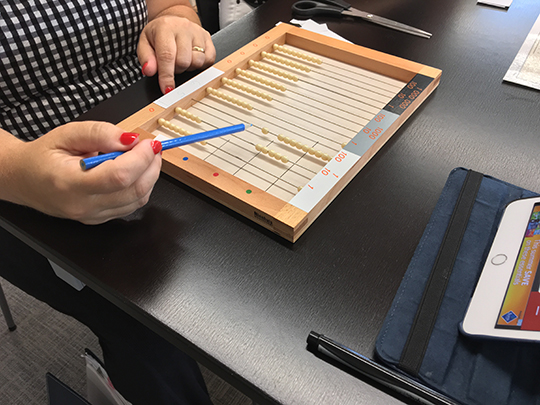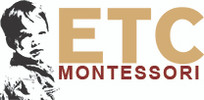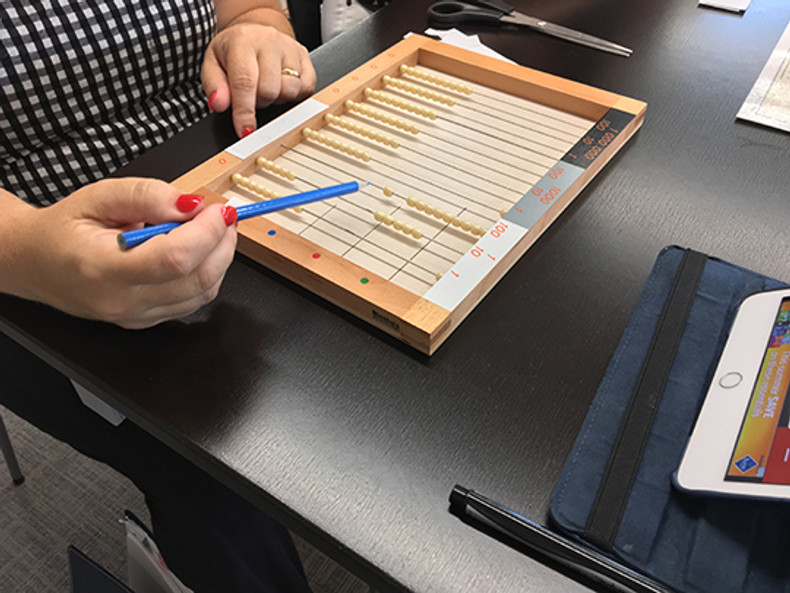
Part I
Depending on when you personally were educated, when you took your Montessori training, or how frequently you choose to review what is current in the educational arena, you may or may not be aware of what children in K-12 are expected to know in their mathematical education. Working with today’s standards is a multi-level process, not unlike the four presentations of whole number checkerboard! Like this series of Montessori presentations, students’ mathematical understanding is moved from simple to complex with a series of integrated concepts.
Today’s standards are broken down into two distinct areas, content standards and process standards. To abstractly complete the multiplication series, the child must know his multiplication facts in order to arrive abstractly at the product of a multi-digit multiplication problem.
Today’s students are expected to show multiple ways to arrive at a solution of a word problem and to communicate that process. We have been doing this in the language and cultural curriculum for decades, it is time we provide the same opportunities for the math curriculum. Once again, Dr. Montessori was ahead of her time and none of the five process standards should pose a difficulty for Montessori students. The beauty of the Montessori math curriculum is that it shows the same concept from multiple perspectives. Just think of the multiple representations embedded in the multiplication sequence in both facts and operations! Current standards demand we as teachers must do a better job of asking our students to communicate how they arrived at their solution! Verifying that students calculated the correct answer is no longer the expectation of teachers today. Using higher level questioning and scaffolding students’ thinking is how we build connections.
The Five Content Standards:
- Numbers and Operations
- Algebra
- Geometry
- Measurement
- Data Analysis and Probability
The Five Process Standards:
- Problem Solving
- Reasoning and Proof
- Communications
- Connections
- Representations
Looking at the five content standards it is easy to see that number and operations is easily handled in both base ten and fractions through the traditional Montessori sequence. The advanced thinking process is available to all students if they are presented the full curriculum in the sequence it was intended. I am afraid to say, in my observations of many elementary classrooms, that this full curriculum is not presented. I am not sure why this is so, but my intuition is that is has nothing to do with what the children are capable of, but more of what the teacher is comfortable presenting. Long division and Level II bead games are a part of the lower elementary sequence for a reason; these presentations meet the developmental level of these children and provide the sensorial base for further abstract work in the upper elementary classes. Training programs need to provide Adult Learners with the understanding that this sequence meets the child’s interest and is not just something that a teacher “might get to” with their advanced students! The presentations for missing addends and minuends, advanced snake games, Level II bead games, and exponent work with the bead chains provide much needed sensorial foundations for understanding algebraic reasoning. Remember how you may have learned algebra abstractly, and then your own personal “ah-ha” when you saw that 52 and 53 actually made a square and cube respectively. Shouldn’t every student have the opportunity to visualize this as a part of their mathematical understanding? This is the beauty of the multiple perspective of the Montessori curriculum and it meets all process standards with no modifications!
While I understand that incorporating word problems into the daily work of all the content areas was not the way that I personally was presented math, nor was it the way my own Montessori training was presented, I cannot find fault with the format. In looking at Bloom’s taxonomy, it is clear that word problems represent the application stage. As an educator, I believe that staying at the knowledge and comprehension level of how to do a mathematical procedure is not appropriate educational practice. I want my students to be fluent with the application, synthesis, and evaluation levels of understanding. Yes, it does depend on their cognitive level, but how else do we provide the appropriate neural networking for our students if we do not present these more advanced levels of thinking?
To be sure, there are newly added concepts that are not presented in the traditional Montessori math materials. However, I do not believe that they should be ignored. Presenting curriculum in measurement, graphing, data analysis and probability is important in today’s world. Allowing students to manipulate data makes them more aware of the type of communication that is necessary to accurately share their own findings. Along the way, we are giving students the tools to analyze the information given to us in return. How better to prepare students for today’s world and tomorrow’s workplace by developing critical minds for the information given to them!
Dr. Montessori believed in innovation and she herself did not remain static; why wouldn’t we continue experimenting in homage to her great work? Montessori environments are an advanced laboratory for developing innovative thinking, but they are only as good as the teacher who prepares that environment. Current educational standards are not the antithesis of Dr. Montessori’s work, and should not be viewed as “not Montessori”, but rather a process to continue the scientific experiment of how to educate children for tomorrow’s world. The world of the 21st Century will need innovative thinkers to find solutions to 21st Century problems, after all, isn’t this the ultimate goal of a Montessori education?

